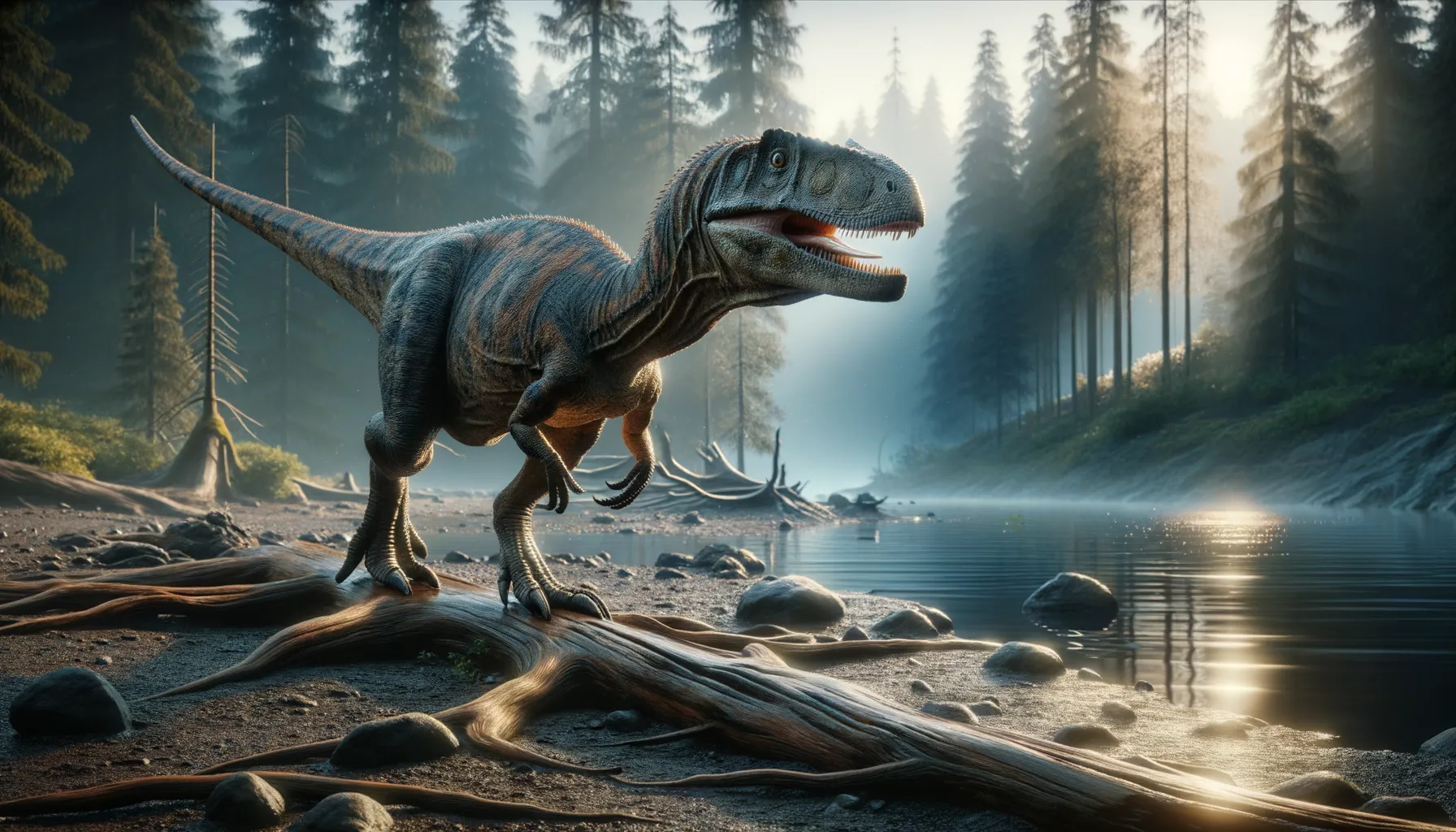
Betasuchus
Unraveling secrets of Europe's lost giants.
Period
Cretaceous
Length
Approximately 3.5 to 4 meters long.
Height
Around 1.5 meters at the hip.
Weight
Estimated to be around 150 to 200 kilograms.
Betasuchus was a small theropod dinosaur from the Late Cretaceous period discovered in the Netherlands. Known from limited fossil remains, it provides intriguing insights into the European dinosaur fauna of its time. Its name means 'Beta crocodile', a nod to its initial misclassification. Despite its scarce remains, paleontologists continue to study these fossils to understand more about its life and environment, shedding light on dinosaur diversity in what is now Europe.
Diet
Betasuchus was likely a carnivore, feeding on small animals. Its diet probably consisted of small vertebrates and possibly carrion, showing adaptability in its food sources.
Hunting
Betasuchus would have used its speed and agility to hunt smaller prey. It may have employed stealth and quick bursts of speed to catch its diet's small and elusive creatures.
Environmental challenges
During its time, Betasuchus faced challenges such as climate fluctuations and competition for resources with other species. The changing environments might have required adaptability in diet and behavior. Sea levels fluctuated during the Late Cretaceous, affecting habitat availability and forcing migrations.
Speed
Likely moderate, adapted for active movement.
Lifespan
Exact lifespan unknown, typical for theropods.
First discovery
Discovered in 1883 by Seeley in Netherlands.
Fun Facts
- Betasuchus is a rather mysterious dinosaur because it's known from limited fossil remains, primarily a femur bone.
- This dinosaur lived during the Late Cretaceous period, around 66 million years ago, just before the mass extinction event.
- Betasuchus was found in what is now the Netherlands, making it one of the few dinosaurs known from this region.
- The name Betasuchus translates to 'secondary crocodile,' despite it being a theropod dinosaur rather than a crocodile.
- Due to its incomplete fossil record, scientists have speculated it could belong to several different theropod groups.
- Betasuchus was likely a bipedal dinosaur, meaning it walked on two legs like the more famous T. rex.
- Its exact size and appearance remain a matter of scientific speculation, contributing to its mysterious allure.
Growth and Development
Like many theropods, Betasuchus likely exhibited rapid growth rates, reaching adulthood relatively quickly. Fossil evidence suggests it might have had growth spurts during certain periods. Juvenile Betasuchus might have relied on different food sources compared to adults, minimizing competition.
Habitat
Betasuchus lived in a terrain that was likely varied, comprising floodplains and forests. The presence of water bodies meant access to diverse ecosystems, rich in flora and fauna. These environments provided both plentiful food sources and hiding spots from larger predators.
Interaction with other species
Betasuchus likely coexisted with other dinosaurs and prehistoric mammals, each occupying different ecological niches. Interaction with other species could have been competitive or opportunistic, depending on food availability. It may also have interacted indirectly through competition for shared space or resources.
Natural lifespan
Lifespan estimated to be around 20 to 30 years.
Reproduction
Betasuchus, like most dinosaurs, likely laid eggs. These might have been incubated in nests on the ground. Parental care may have been limited post-hatching, as evidenced by modern bird-like theropods.
Social behaviour
Social behavior of Betasuchus is not well-understood, but it might have been solitary or lived in small groups. These social structures could aid in hunting strategies and rearing young. Displays of aggression or dominance could help maintain group hierarchy.
Fossil locations
Fossils of Betasuchus have been found in Maastrichtian deposits in the Netherlands. This limited geographical discovery provides valuable context for Late Cretaceous Europe. The remains are partial, yet they hold clues to evolutionary adaptations and environmental fit.
